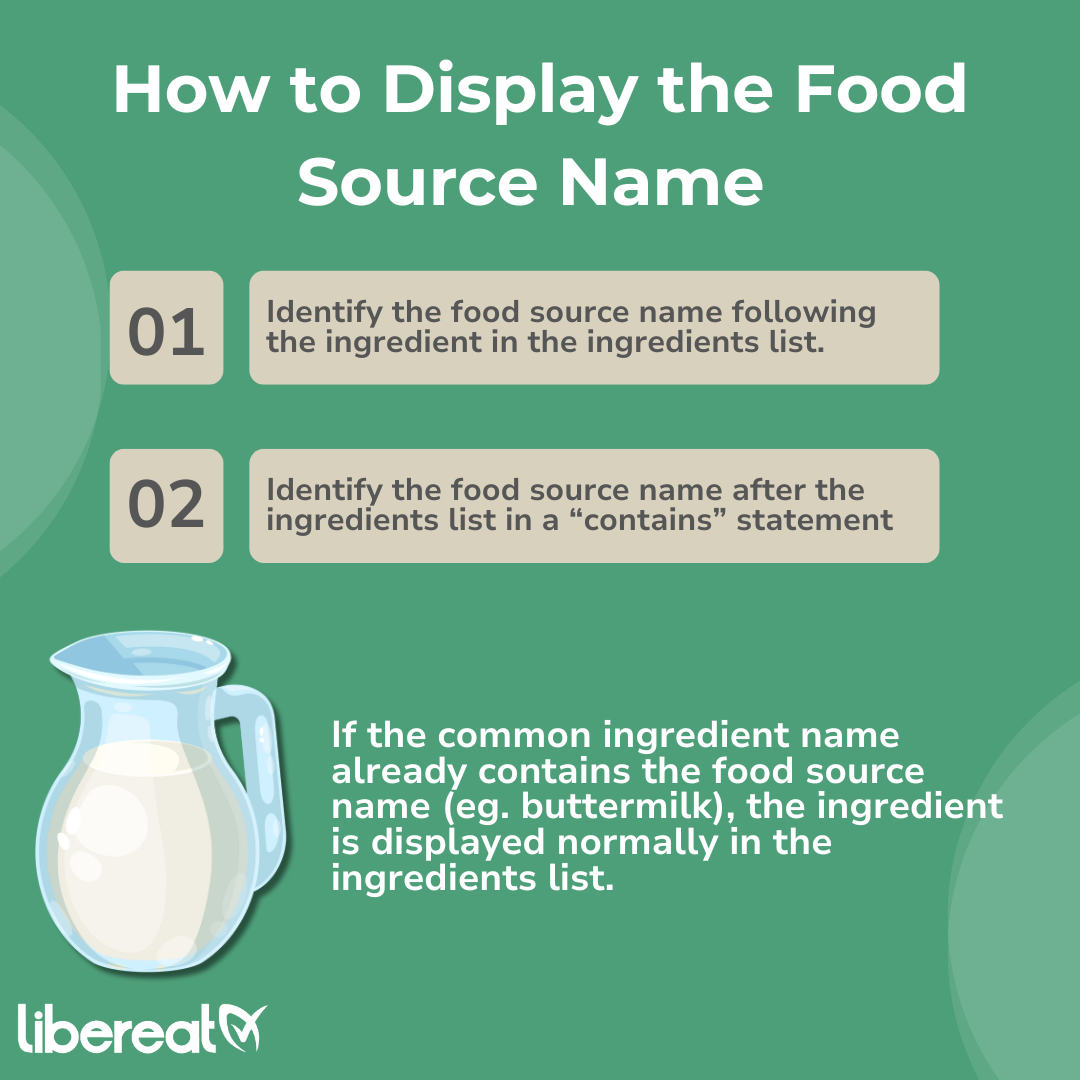Effectively declaring milk as an allergen in ingredient lists can be a significant challenge for food safety professionals in the United States.
It’s estimated that millions of people in the U.S. are allergic to milk. Out of all the major food nine allergens in the U.S., milk represents the most common cause of recalls due to undeclared allergens
Failing to correctly declare allergens can have severe consequences for businesses and consumers, so it’s crucial to be aware of the main allergens, the relevant food safety legislation, and actions to reduce the risk of incorrect allergen information and correctly follow food labeling requirements.
What is a milk allergy?
A cow’s milk allergy occurs when the immune system mistakenly identifies two specific proteins in milk—casein and whey—as harmful. In response, the body produces antibodies to attack these proteins, treating them as dangerous antigens. This immune reaction triggers the symptoms associated with milk allergies.
Milk allergies and lactose intolerance are often confused as they can share some symptoms. However, lactose intolerance occurs due to a digestive issue and cannot be fatal like an allergic reaction. While cow’s milk is considered a major allergen, many other types, such as goat’s milk, contain similar proteins that may cause an allergic reaction.
For food manufacturers and retailers, adhering to allergen labeling legislation is not just a legal obligation but also a critical component of consumer safety due to the severity of allergic reactions.
Allergic reactions are unpredictable and, in the worst-case scenario, can result in anaphylaxis. This may result in swelling in areas such as the throat and tongue, making breathing difficult and potentially fatal. With consumers’ lives on the line and an increasing number of the public suffering from food allergies, food businesses’ stakes are higher than ever.
If someone is going into anaphylactic shock, the Mayo Clinic advises the following steps:
- Call 911 or your local emergency number.
- Ask if they need help administering an epinephrine autoinjector if they have one. This is normally injected into the thigh, though the FDA has recently approved EpiPen nasal sprays.
- Ensure they are lying face up and still. If vomiting or bleeding from the mouth occurs, they must lie on their side to prevent choking.
- Cover the person with a blanket and loosen tight clothing
- Apply CPR until paramedics arrive If there are no signs of breathing, coughing, or movement. Aim for 100 chest presses per minute.
What are the major food allergens identified by the FDA?
Legislation was introduced in the U.S. to help food-hypersensitive consumers stay safe and make informed choices regarding their food purchases. The legislation identifies key foods that account for most food allergens in the country.
The Food Allergen Labeling and Consumer Protection Act of 2004 (FALCPA) introduced eight major allergens:
- Crustacean shellfish
- Wheat
- Soybean
- Fish, referring to finned fish
- Milk, referring to domesticated cows’ milk
- Tree nut
- Eggs, specifically eggs from domesticated chickens.
- Peanut
- Sesame was introduced as the ninth allergen on January 1st, 2023, under the Food Allergy Safety, Treatment, Education, and Research Act (FASTER).
The nine major allergens must be declared on the packaged food and drink ingredient list. The food label must clearly state the food allergens’ source name, either in parentheses following the ingredient (e.g., “whey (milk)”) or via a “Contains” statement immediately following the ingredients list (e.g., “Contains milk”).

While the FDA enforces this, some foods are regulated by the Food Safety and Inspection Service, an agency within the United States Department of Agriculture. The FSIS regulates products containing meat, poultry, and eggs under the Federal Meat Inspection Act (FMIA), the Poultry Products Inspection Act (PPIA), and the Egg Products Inspection Act (EPIA). While FALCPA labeling requirements do not apply to these products, using an allergen statement is still encouraged.
Consequences of Incorrect Allergen Labeling in the United States
Failure to declare any of the big nine allergens regulated by the FDA will result in product recalls, which can be time-consuming, resource heavy and costly for businesses.
As stated on the FDA website, food recalls will be conducted for products that pose a risk of injury or gross deception. The FDA will typically request them, and the relevant parties will voluntarily carry out the recalls using the guidance supplied by 21 CFR 7 of the Code of Federal Regulations.
Section 423 of the Food Drugs and Cosmetic Act, added by Section 206 of the Food Safety Modernization Act on January 4th, 2011, also gives the FDA authority to issue mandatory recalls if voluntary action is undertaken.
Businesses can find it challenging to undergo food recalls. When a food recall occurs, the operation must inform regulatory bodies, businesses across the supply chain, and consumers of issues with the product. A significant amount of time will likely be spent on PR activities in an attempt to minimize any loss of reputation.
Workers will find their time being diverted from other critical tasks, and the cost of recalling production can devastate businesses. The Food Marketing Institute and the Grocery Manufacturers Association (GMA) estimate that food recalls cost businesses an average of $10 million in direct costs alone.
With the high cost of incorrect allergen labels and the risk of injury to consumers, food business operators are under greater pressure than ever to ensure their food safety and management processes have exceptional allergen detection and data quality assurance measures in check.
Take a look at our dedicated food recall page to learn more about how recalls may occur. You can also learn more about the Big 9 allergens and relevant food law at our U.S. Big Nine Allergens Hub. If you are interested in upgrading your allergen detection methods, don’t hesitate to contact us to learn more about how LiberEat’s food safety compliance software can keep your business safe.
LiberEat Allergen Detection Software
LiberEat’s food safety software helps prevent errors in allergen data on supplier specifications, website and app data, food packaging, and menus. This can help protect your customers from the major allergens—find out more about these with our allergen information hub.
Correctly managing and reviewing your allergen data is essential for keeping you and your customers safe.
Errors in allergen data can cause potentially devastating allergic reactions and expensive product recalls. Give yourself peace of mind, and contact us to learn more about how LiberEat can help protect your business.

